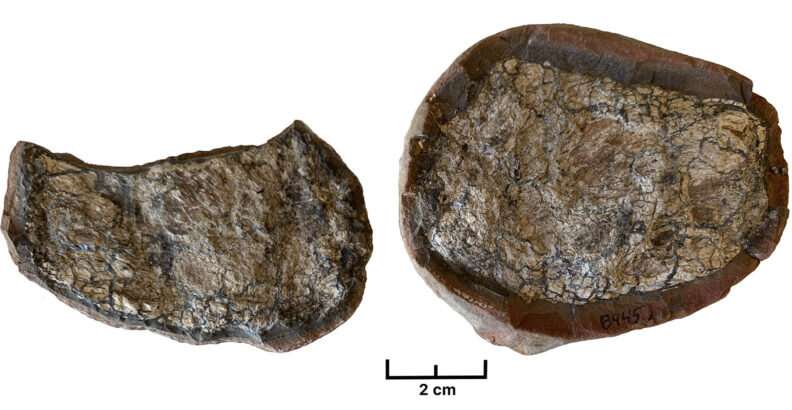Study of 300-million-year-old feces finds meat on the menu

Curtin researchers have analyzed organic molecules preserved within 306-million-year-old fossilized animal feces (coprolite) and unlocked a wealth of information about the diets of long-extinct animals and prehistoric ecosystems. Their study is published in Biology.
Lead author Ph.D. student Madison Tripp from Curtin's WA-Organic and Isotope Geochemistry Center (WA-OIGC) said the research had revealed important biomolecular information that, despite being millions of years old, remained intact at a well-preserved fossil site.
"The samples, collected from Mazon Creek in Illinois and supplied by Field Museum Chicago, are the first coprolites of the 60-million-year-spanning Carboniferous age to be studied for organic molecules," Tripp said.
"By studying these molecules preserved inside the fossilized feces samples, we found fascinating dietary information about an unidentifiable extinct animal from Earth's distant past—showing that the animal was a meat-eater or on a predominantly carnivorous diet.
"Molecular analysis of the feces or coprolites showed two clear indicators the animal was carnivorous. One was the high proportion of a variety of molecules derived from cholesterol, which is present in most animals, and the other is a distinct lack of plant-derived biomarkers."
"Interpreting the diets of extinct animals through the biomolecular analysis of coprolites is important for studying ancient environments and ecosystems, which may have implications for understanding, our current ecosystems."
Research co-author ARC Laureate Fellow, John Curtin Distinguished Professor Kliti Grice, Director of WA-OIGC, who was this week named Scientist of the Year at the 2022 Premier's Science Awards, said the research highlighted the significance of exceptionally preserved fossil sites, such as Mazon Creek.
"These hard, compact masses or carbonate concretions, which are known to have rapidly encapsulated the flora and fauna and are responsible for the exceptional preservation at Mazon Creek, are important in not only soft tissue preservation but also biomolecular preservation," Professor Grice said.
"This means we can analyze and investigate ancient animals and ecosystems, even when intact DNA is no longer present.
"Our study highlights the importance of future studies into the molecular preservation of such specimens, which have the potential to contain significant palaeoenvironmental and ecological information expanding on our previous research on Devonian and Jurassic fossils."
More information: Madison Tripp et al, Fossil Biomarkers and Biosignatures Preserved in Coprolites Reveal Carnivorous Diets in the Carboniferous Mazon Creek Ecosystem, Biology (2022). DOI: 10.3390/biology11091289
Provided by Curtin University





















